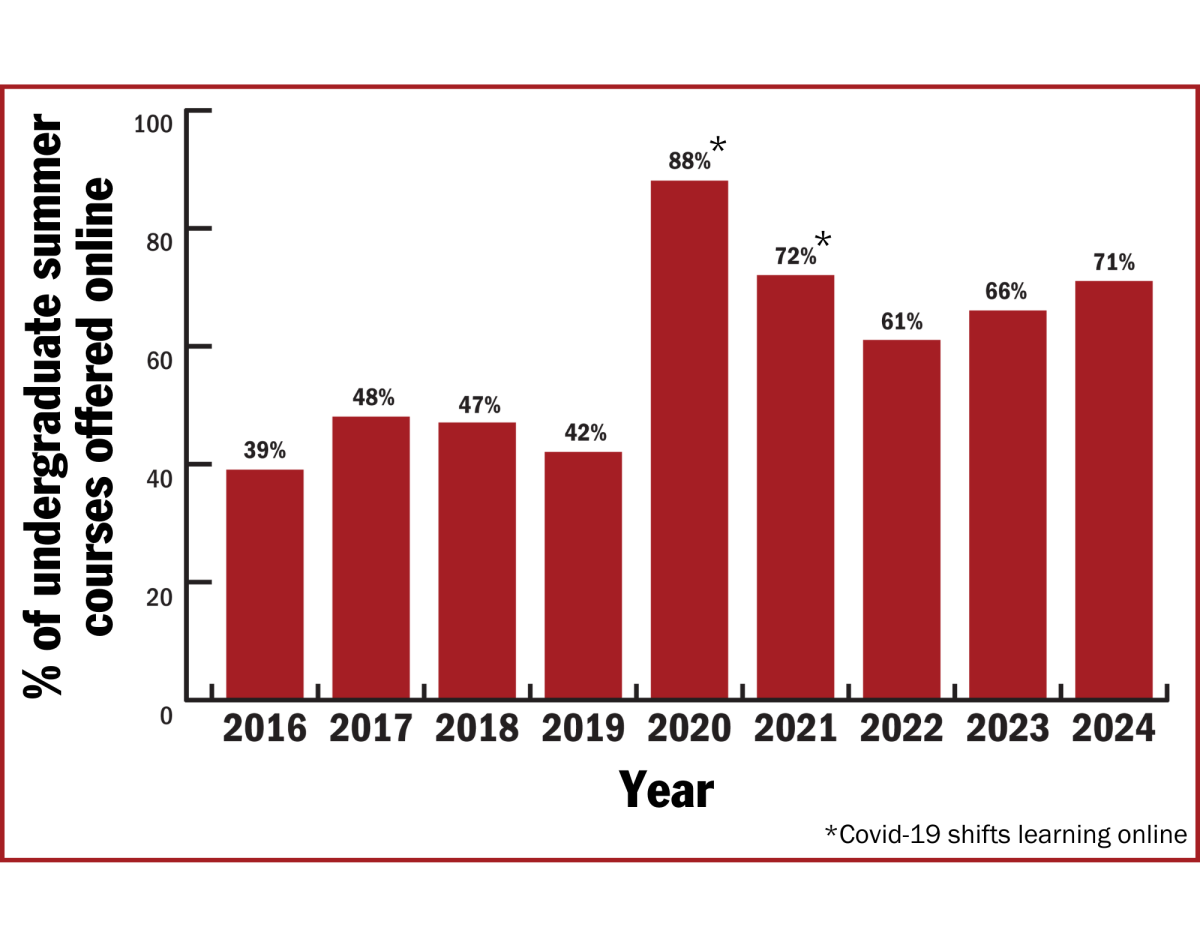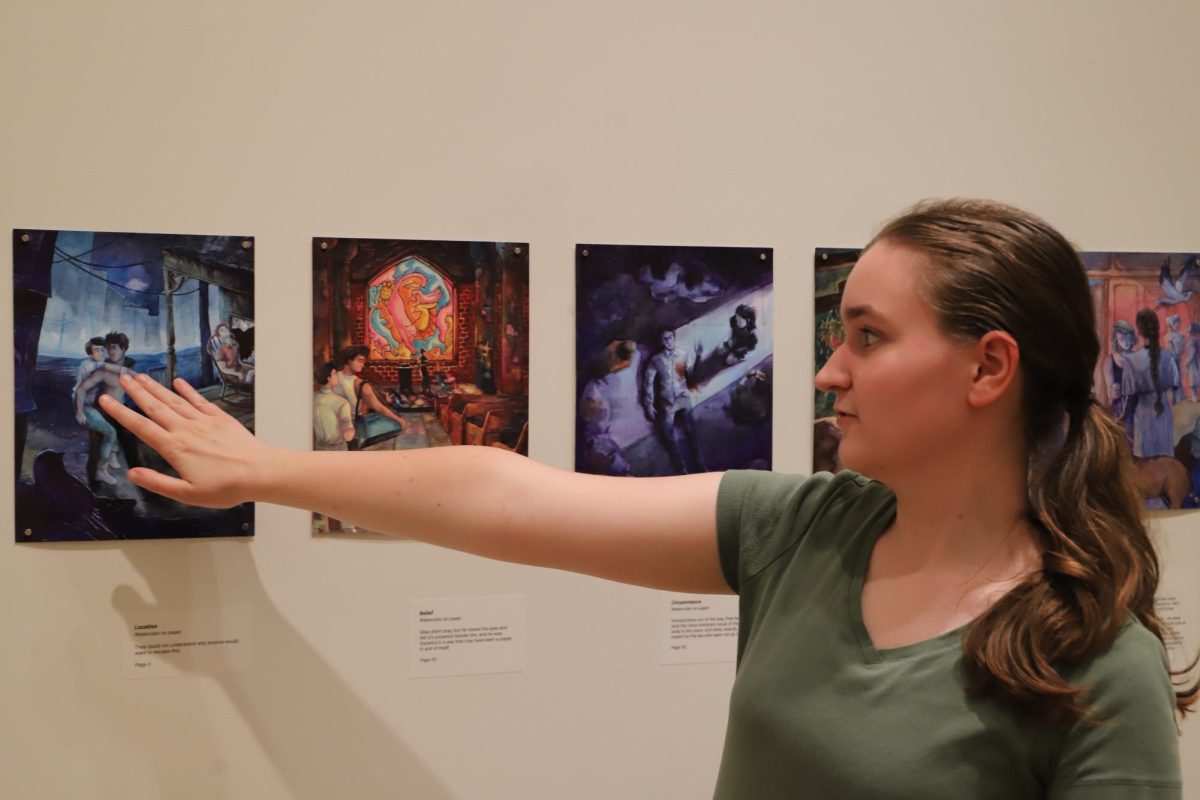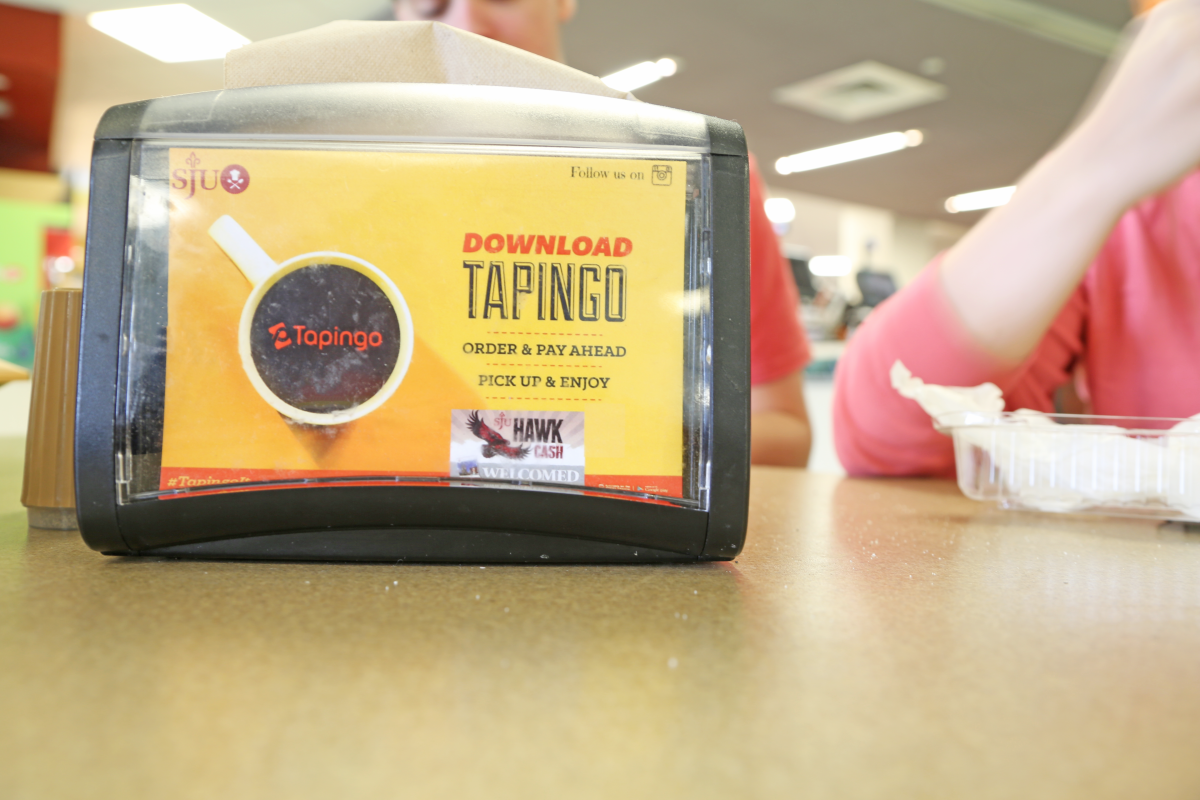St. Joe’s joins the Tapingo network
Ashley Cappetta ’17
Copy Chief
Tapingo, released at Saint Joseph’s University at the start of the fall 2016 semester, is the university’s newest mobile application used to enhance the college dining experience.
By downloading the Tapingo application on mobile devices, students, faculty, and staff can order food and beverages from several different locations on campus, customize the order, pay via the app, and pick up the food without waiting in lines.
“We brought this [Tapingo] on board to present something new to the students— something that you could order some food and you can do it quickly,” said Timothy McGuriman, associate vice president for Administrative Services. “This [Tapingo] fit the bill. We haven’t really promoted it or advertised it—it was a soft opening.”
With Tapingo’s soft opening came small signs in the napkin holders in Campion Dining Hall, as well as signs in front of all available food locations accepting Tapingo on St. Joe’s campus. Vendors include Starbucks, Einstein Bros. Bagels, and Declining Balance (DB).
The application aims to accommodate the demand on time, while improving the university’s customer service at the various vendors.
“We certainly want to satisfy the students… We are willing to look at things differently if the students give us the opportunity to respond. And if we’re not already working on it, we’ll find a way to implement that,” McGuriman said.
McGuriman, who joined the faculty of St. Joe’s at the beginning of the semester, acknowledged that the release of the application has been in the works since the spring of 2016.
“I think we were probably 40 or 50 percent into the initiative when I arrived at St. Joe’s,” McGuriman said. “But, they’ve been in process with releasing Tapingo on campus since March or April. We wouldn’t have implemented it at the end of the semester. We wanted to make sure it was right—that it really worked.”
The initiative came as a result of the supply of food and demand of students on campus.
“The whole idea behind this was to accommodate the demand on time that students have and trying to keep pace with emergent technology,” McGuriman said. “Convenience. That’s what we’re going for with Tapingo.”
According to Joseph Brown, director of Auxiliary Service, Tapingo was inexpensive for the university, as well.
“Tapingo reached out to the university and then we took it to our Dining Provider [at the university]. It isn’t costing the university anything,” Brown stated. “Now, there is supposed to be an expansion of this, and that expansion would sort of be like an ‘Uber.’ You could put an order in and someone would deliver it to you—but that would have the fee associated with it.”
Currently, there are 28 higher education institutions using the mobile application.
“They were using it on some other campuses—and it was something we could do pretty easily. Everyone has phones, and everyone is always using their phones,” Brown noted.
To date, 385 students have used Tapingo and the app has proven to be successful, according to Brown.
Amelia McGrath, ’18, says the mobile application has been an effective tool.
“I really love using Tapingo,” McGrath said. “It’s been super helpful, especially when I’m in a rush.”
Eric Alston, ’19, has also seen the app’s benefits.
“Tapingo is really that easy—you tap, and you go,” Alston said. “I tapped, got food, and left. It was great.”
Although Saint Joseph’s has discovered this new convenience by implementing Tapingo, McGuriman acknowledged that he still has concerns about implementing this mobile tool in the scope of the university’s Jesuit mission.
“I firmly believe that part of the student experience at Saint Joseph’s—with all due respect to our Jesuit traditions—is that so much that happens in the spiritual side of things happens around meals,” McGuriman noted. “To talk, to share, to experience food together. When you bring something like this into the mix, it almost competes with that.”
But, according to McGuriman, students, staff, and faculty who rely on these kinds of applications are doing so in order to keep pace with their lives while respecting the Jesuit values.
“I think the challenge for us in all of this is: Bring the technologies that the students want, but respect the broader experience that a Saint Joseph’s student can have here,” McGuriman said. “Which should be intentional and different than what they would expect to experience at any other institution that’s not Jesuit, that’s not Catholic. Then they have the St. Joe’s experience; the Jesuit experience.”
































